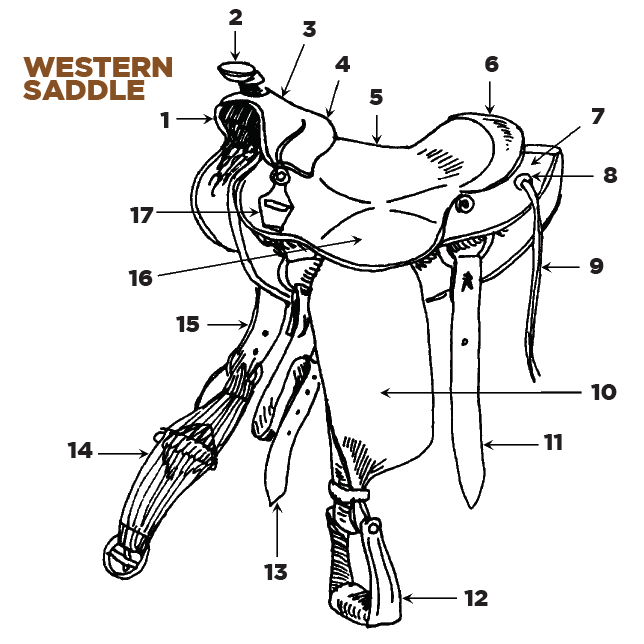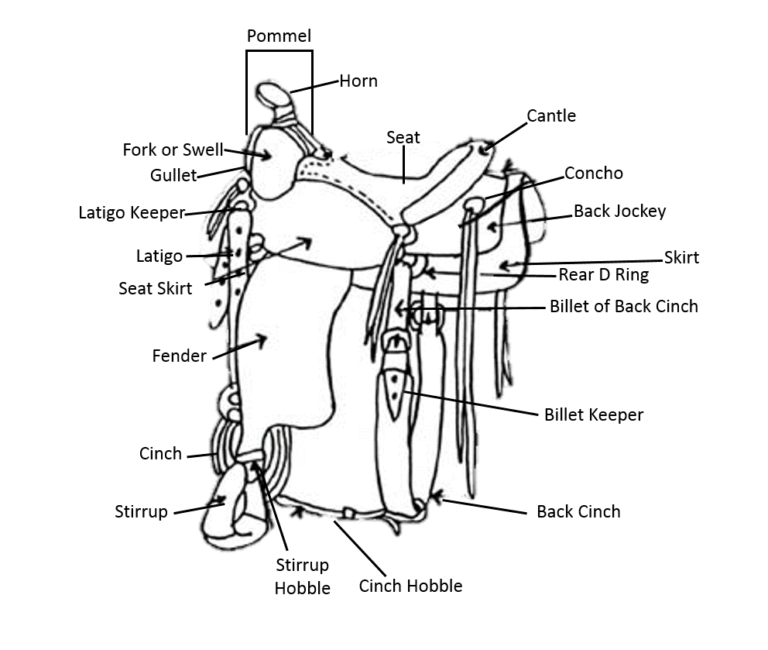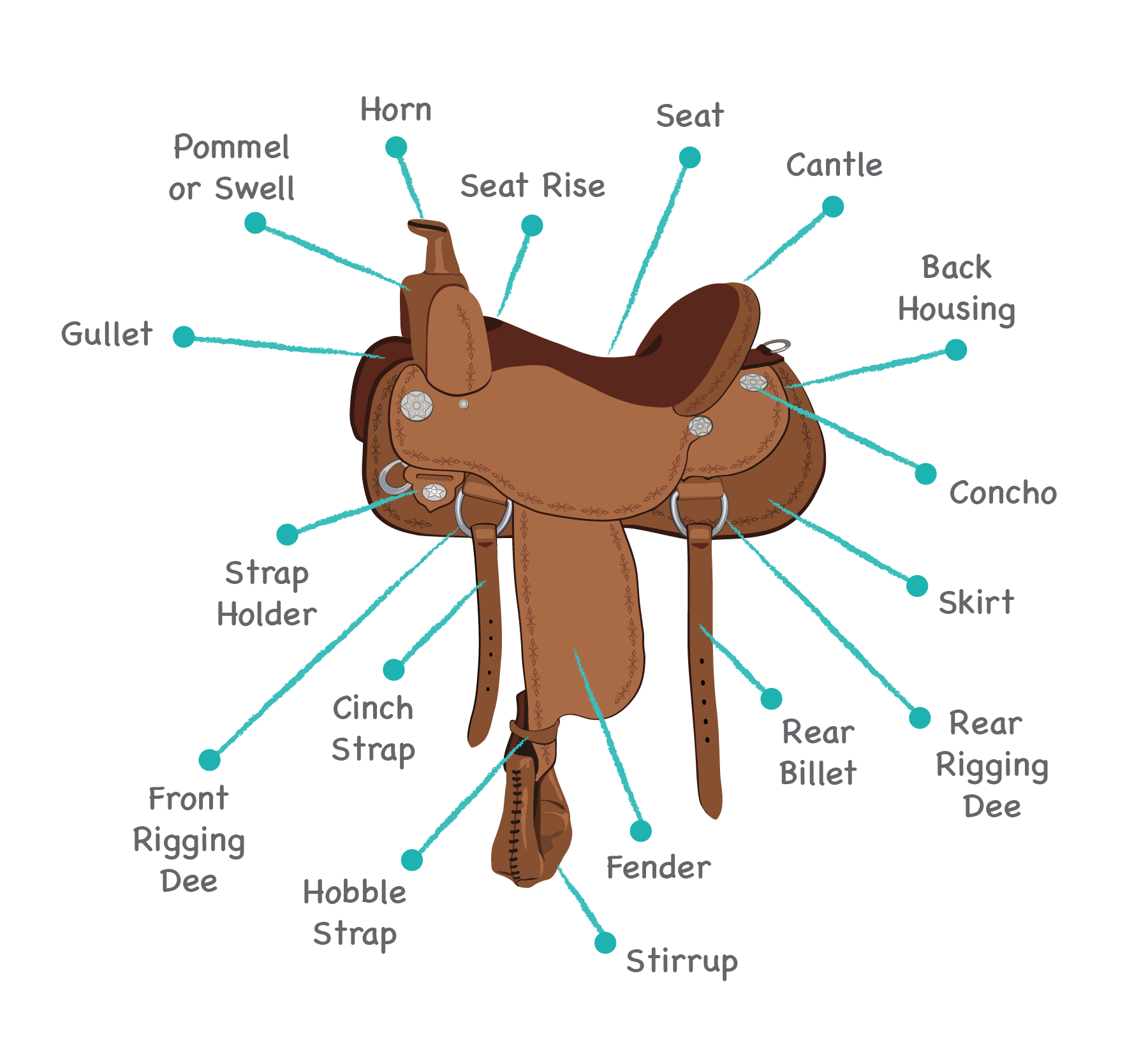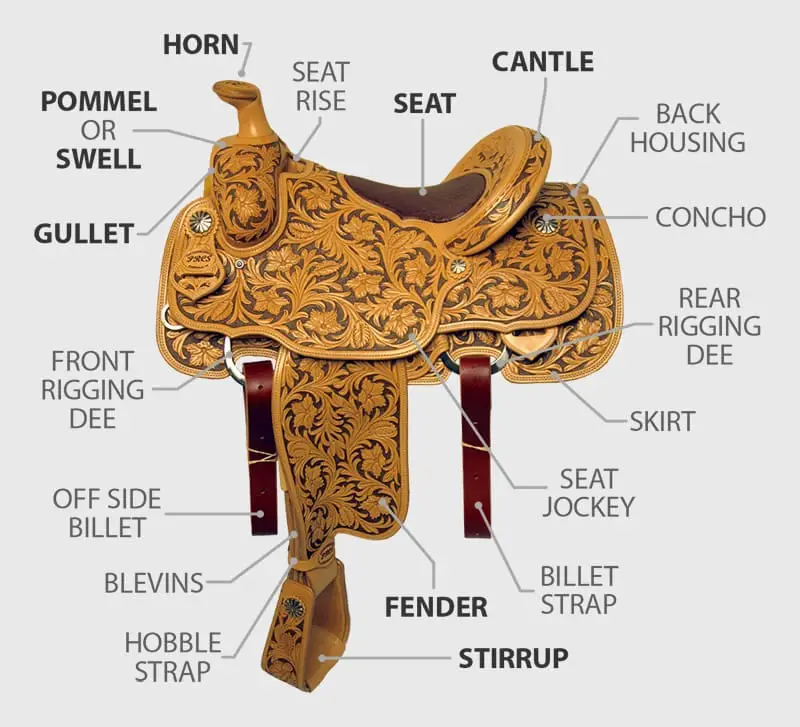Do you ever wonder about the different parts of a western saddle? As a horse lover and rider, it’s important to understand the specifics of your horse’s gear. From the saddle horn to the cinch, every aspect of the saddle has a purpose. Here is a comprehensive guide to the various parts of a western saddle and their functions.
Saddle Tree
 The saddle tree is the foundation of the saddle and is responsible for its overall shape. It’s typically made from wood and reinforced with steel to give it strength. The saddle tree is shaped to fit the horse’s back and distribute the rider’s weight evenly. There are a variety of tree designs available, each with its own characteristics based on the intended use and horse’s body type.
The saddle tree is the foundation of the saddle and is responsible for its overall shape. It’s typically made from wood and reinforced with steel to give it strength. The saddle tree is shaped to fit the horse’s back and distribute the rider’s weight evenly. There are a variety of tree designs available, each with its own characteristics based on the intended use and horse’s body type.
Horn
 The saddle horn is one of the most recognizable features of the western saddle. It’s a sturdy knob located at the front of the saddle that serves a few different purposes. Riders can use the horn to tie off their reins or rope, and it can also be used to steady yourself when riding over rough terrain. Additionally, the horn is often used in cattle work for roping and herding.
The saddle horn is one of the most recognizable features of the western saddle. It’s a sturdy knob located at the front of the saddle that serves a few different purposes. Riders can use the horn to tie off their reins or rope, and it can also be used to steady yourself when riding over rough terrain. Additionally, the horn is often used in cattle work for roping and herding.
Cantle
 The cantle is the raised back portion of the saddle and is often used as a grip for riders during sharp turns and stops. It also serves to keep the rider from slipping backward. The height of the cantle varies depending on the intended use of the saddle. A high cantle is used in roping, while a lower cantle is better for trail riding.
The cantle is the raised back portion of the saddle and is often used as a grip for riders during sharp turns and stops. It also serves to keep the rider from slipping backward. The height of the cantle varies depending on the intended use of the saddle. A high cantle is used in roping, while a lower cantle is better for trail riding.
Seat
 The seat is where the rider sits and provides a comfortable place to sit while on horseback. It’s typically padded and covered with leather. The size and shape of the seat can vary depending on the rider’s preference and the intended use of the saddle. A larger seat is better for long rides, while a smaller seat is better for working with cattle.
The seat is where the rider sits and provides a comfortable place to sit while on horseback. It’s typically padded and covered with leather. The size and shape of the seat can vary depending on the rider’s preference and the intended use of the saddle. A larger seat is better for long rides, while a smaller seat is better for working with cattle.
Stirrups
 The stirrups are where the rider places their feet and provide stability while riding. They are typically made of wood or metal and are attached to the saddle with leather straps. The length of the stirrup can vary depending on the rider’s leg length and personal preference.
The stirrups are where the rider places their feet and provide stability while riding. They are typically made of wood or metal and are attached to the saddle with leather straps. The length of the stirrup can vary depending on the rider’s leg length and personal preference.
Fenders
 Fenders are the leather strips that hang down on either side of the saddle and hold the stirrups in place. They provide support for the rider and help keep the stirrups stable. The fenders are often adjustable and can be moved to accommodate the rider’s leg length.
Fenders are the leather strips that hang down on either side of the saddle and hold the stirrups in place. They provide support for the rider and help keep the stirrups stable. The fenders are often adjustable and can be moved to accommodate the rider’s leg length.
Billets
 The billets are the straps located on the underside of the saddle that hold the girth and cinch in place. They’re typically made of nylon or leather and are adjustable for the horse’s comfort. Proper placement of the billets is important to prevent the saddle from slipping or moving during riding.
The billets are the straps located on the underside of the saddle that hold the girth and cinch in place. They’re typically made of nylon or leather and are adjustable for the horse’s comfort. Proper placement of the billets is important to prevent the saddle from slipping or moving during riding.
Cinch
 The cinch is used to secure the saddle to the horse’s belly and keep it in place while riding. It’s typically made from leather or nylon and is adjustable to fit the horse comfortably. Proper fit of the cinch is essential to prevent the saddle from slipping during riding.
The cinch is used to secure the saddle to the horse’s belly and keep it in place while riding. It’s typically made from leather or nylon and is adjustable to fit the horse comfortably. Proper fit of the cinch is essential to prevent the saddle from slipping during riding.
Understanding the various parts of a western saddle is essential for every rider. It ensures the proper fit and function of the saddle, keeping both the horse and rider safe and comfortable. So, the next time you saddle up, take a closer look at your gear and appreciate the craftsmanship and purpose of each component.